- Home
- C. S. Lewis
Studies in Medieval and Renaissance Literature Page 5
Studies in Medieval and Renaissance Literature Read online
Page 5
ane while he wes reod and reousede on heorte.
Þa hit alles up brac hit wes god þat he spac.
Þus him sæide þer riht Arður þe aðele cniht,
‘Lauerd crist, godes sune, beon us nu a fultume,
þat ich mote on life goddes laʒen halden.’37
(19887–99)
It will be noticed that in all these quotations there is hardly anything that could be called poetical adornment. I doubt whether the poet was thinking about poetry; it sounds more as if his only object were to make sure that we should see exactly what he had imagined. We may even doubt how far he knew that he was working from imagination. But the Brut can be good in a different vein. I spoke a while back of its close adherence to the Anglo-Saxon type of poetry. But in one important way it departs from that type. The simile was almost (not quite) unknown to the Anglo-Saxon poets. It is frequent in the Brut. Some of its similes are short and easily found. Troops muster thick as the falling hail, alse haʒel þe ualleð (14517 et passim): Ridwathlan rushes on his enemies as a þode or whirlwind, carrying a dust-cloud, falls in a field (27645); at an angry meeting many a stout Briton had beres leches, boar’s looks (22281–2); or (less obviously) an army advances ‘as if all the earth would catch fire’ (20643–4). But besides these we find similes of the Homeric or ‘long-tailed’ type; fittingly, since the Brut is, in its manner and temper though not in its art, the most Homeric poem in English. One would much like to know where its long-tailed similes come from. If they had any literary model it has been fully assimilated; they do not read at all like the stanza-long, laboured similes in which Spenser thought he was being Virgilian. They smell of real country and first-hand observation. As here:
Up bræid Arður his sceld foren to his breosten
and he gon to rusien swa þe runie wulf
þenne he cumeð of holte bi-honged mid snawe
and þencheð to biten swulc deor swa him likeð.38
(20120–7)
A moment later—for, as in Homer, and more than in Virgil, the similes tend to bunch—he tells his men that their enemies will fly
swa þe hæʒe wude
þenne wind wode weieð hine mid mæine—39
(20135–7)
and after that comes the longer and more complex simile of the crane flying broken-winged from the hawks to be met among the reeds by hounds, so that neither land nor water will now save it, for the hour of the noble bird (kinewurðe foʒel) is come (20163–75). That of the goat pursued by the wolf (21301–15) is too long to be quoted. It is remarkable for being, at the end, mortised back into the main narrative (I think Homer never does this) by Arthur’s triumphant cry that he himself is the wolf and Colgrim the goat (21315).
It will be noticed that all these come from the Arthurian section of the Brut, and it is there, I believe, that its addition to, and transformations of, any possible source we know, are most continuous. Our text of Wace reads, in comparison, like an epitome; it gives a skeleton: nearly all the flesh is supplied by the Brut. This is of course most obvious in the very long and frequent passages which have no analogue at all in the French; but it is no less instructively seen where the two texts are close. In the following, where Merlin’s mother tells how he was begotten, I have italicized what is peculiar to the Brut.
Þa ich wes an uore fiftene ʒere,
þa wunede ich on bure, on wunsele mine,
maidene mid me, wundre ane uæire.
Þenne ich wæs on bedde iswaued mid soft mine slepen,
Þenne com [me]* biuoren þa fæirest þing þat wes iboren,
swulc hit weore a muchel cniht al of golde idiht.
Þis ich isæh on sweuene alche niht on slepe;
þis þing glad me biuoren and glitene on golde.
Ofte hit me custe, ofte hit me clupte. . . .40
(15700–17)
It will be apparent how much the Brut has shaded and softened and beautified the story, making it both more credible and more tolerable. The young princess is put in her right setting, with her wunsele and her maids: the image of sheltered royal girlhood—sheltered, at least, from all merely human lovers—is built up. Her own experience is all dim, half a dream, something between sleep and waking. And the daemon is the loveliest thing ever born.
But I have kept to the end two touches that seem to me proofs of yet higher power. One turns on two words. We are twice told, of a storm at sea, that the waves were like ‘burning towns’ (or villages): alse tunes* þer burnen (4578), tunes swulche þer burnen (11978). It may be the phrase of a longshoreman rather than a sailor; waves out at sea are less likely to give this particular appearance. But I do not think I shall ever again see a breaker coming in against the wind without remembering the burning towns. The image, so far as I know, never occurs before or after the Brut. It embodies a quality of eye and imagination which I believe we never meet in Langland, Chaucer or Gower. My other example is more complex. Arthur, exulting over the Saxon rout, looks down on the Avon and sees
Hu ligeð i þan stræme stelene fisces
mid sweorde bi-georede; heore sund is awemmed,
heore scalen wleoteð swulc gold-faʒe sceldes,
þer fleoteð heore spiten swulc hit spæren weoren.41
(21323–30)
Coleridge and Wordsworth would have made this the text for a full dissertation on the esemplastic faculty. First, the imagination turns the mail-clad, hence silvery-gleaming, dead into fishes. Then, assuming the fishes as a basis, by way of a simile within a simile, it half turns them back into knights, comparing the wooden shields and spear-shafts (which would of course leave the bodies on the river bed and float on the surface) to scales and fins. And it does this not as the romantic imagination might, for its own sake, but under the influence of a strong, bitter, and probable passion.
2. SAWLES WARDE
I now turn to the early thirteenth-century Sawles Warde. Its history begins with a well-known passage in the New Testament: ‘If the master of the house knew at what time the thief was going to come he would no doubt keep watch and not allow his house to be broken into.’ This passage is then used as the peg on which to hang an allegory in chapters 13–15 of a Latin prose treatise De Anima, possibly by Hugo of St Victor (1096–1146). It is at once twisted into an almost entirely new meaning. In Our Lord’s saying the ‘thief’ had represented Himself, and the unknown hour was the date of the Second Coming and the Day of Judgement. In the De Anima, however, the principalis fur, the master thief, is the Devil, supported by a gang of Vices, and what the master of the house (the soul) has to keep watch against is temptation. It is unbelievable that the Latin author misunderstood or forgot or did not reverence the sense of the original. He obviously feels perfectly free to transform it in any way that suits his purpose, provided that, thus transformed, it is still orthodox and edifying. Very possibly he regarded himself as choosing one, instead of another, from among its multiple senses. In his allegory the master of the house is Animus. He rules, with the aid of Prudentia, Fortitudo, Temperantia, and Justitia, a familia of thoughts, senses, and volitions. Prudentia, as door-keeper, admits a messenger called Timor Mortis who describes the pains of Hell. His words move the virtues to several wholesome resolutions. Then comes another messenger called Amor vitae aeternae et Desiderium coelestis patriae, who, of course, describes the joys of Heaven. The author concludes by drawing, in few words, the obvious moral.
On this modest text an English Johan, of whom we know nothing except that he asks our prayers for his soul, gets to work. He produces something considerably longer than his original, and it cannot, by our standards, be classified either as a new book or as a translation. At the very outset he quotes the Dominical words from Matt. xxiv. 43; the Latin had quoted them from Luke xii. 39. It is hard to see any reason for this change and I suspect that Johan did not even know he had made it. He gives Wit (his equivalent for animus) a silly wife called Wil. It is she who sets the whole familia wrong if she is not carefully watched. The four virtues are daughte
rs of God. Meað (Temperantia) is described as teaching meosure which is the middle point between two evils (49)42—the ‘golden middle way between much and little’ (184). This scrap of Aristotle’s ethical system had not occurred in the Latin. Nor had the clear Virgilian echo at 124, where the first visitant says of the torments of Hell, as the Sibyl had said of the same subject, that he would not tell all though he had a thousand tongues of steel and spoke till they were all worn out (cf. Aeneid, VI, 625). Thus what Johan adds to his original is not necessarily original itself. His loathsomely vivid account of the reptilian horrors in Hell goes far beyond anything in the De Anima, but is indebted to earlier vision literature.
But while Johan is ready to use anything that comes to hand, he also uses continuously—perhaps does not know that he is using, and cannot help using—his own imagination. The De Anima is not very imaginative; at point after point Johan touches it into life. In the Latin Timor Mortis is not described at all. In Johan, ‘he is let in and looked at very hard by them all, for lank he is and lean and his face deathlike and pale and of a strange colour. Every hair seems to be standing erect on his head’ (62–5). He gives his name not as Fear of Death but simply as Fear (68)—a change which, for me at any rate, makes him far more formidable. He tells how the devils will one day bring to us books in which all our sins are written; it is Johan who adds ‘in black, small letters’. We learn how the damned, as in Milton, will be hurried from the extreme of heat to that of cold; Johan adds ‘And they never know which of these two feels (puncheð) the worse’ (110–11). He adds (not without precedent) that if there were no other pains in Hell the very sight of the devils, their faces, their voices, the torrent of insult (schenðlac) that they utter, would be torment enough (131–5). He rises at last into an apostrophe, all his own, which I should weaken by modernizing: O helle, deaðes hus, wununge of wanunge of grure ant of granunge, heatel ham, ant heard wan of alle wontreaðes, buri of bale ant bold of eauereuch bitternesse, þu laðest lont of alle, þu dorc stude . . . (138–41). Such a passage may have originated the fancy—for I think it is nothing more—that Sawles Warde is intended as verse, not prose.
Of the second messenger we learn from the Latin only that he is pulcher et hilaris: in Johan we see Deaðes Sonde actually entering and greeting the master with laughing cheer, and the whole house shining and gleaming with the light that comes from him (227–30). Later, when he is describing Heaven, a small change makes, if I may trust my own reactions, a big difference. The Latin said that the sweet smell of those regions ‘surpasses all kinds of perfumes’. Johan says ‘A man could live forever in the sweetness of it’ (298–9). The first leaves our imagination in the barber’s shop: the second suggests another world.
I believe any fair reader will find Sawles Warde a sappy and lively little work. As often, we must be careful to get the right view of what seem to be, or actually are, its naïveties. When Johan says that the blessed will behold God nebbe to nebbe (318), the daring and homely quality which we find in his words probably did not exist for him. He is simply translating the Pauline facie ad faciem (I Cor. xiii. 12) and might have been hard put to it to find any other rendering. Later (298–300) he tells us that God remains seated as He receives the prayers of all other saints, but stands up when addressed by the virgins. We may smile with pleasure and rejoice to find that not only the Prince of Darkness is a gentleman; or we may say, as someone said to me, that it is ‘a pleasant piece of silliness’. Both reactions perhaps miss the point. It is possible to disagree with, even to hold for ‘silliness’, the medieval exaltation of virginity as the supreme virtue. But granted that exaltation, Johan’s image is a good symbol. If he had met a real anthropomorphist, I expect he would have been quite able to explain that God was incorporeal and therefore would not really sit down or stand up. It would not, of course, follow that in the heat of composition he consciously attended to this.
3
It will be clear that Laʒamon is not the author of the Brut, nor Johan of Sawles Warde, in the sense in which Jane Austen is the author of Persuasion. On the other hand, neither is simply a translator. Nor is it quite satisfactory to regard Wace (in whatever text) and the De Anima as their ‘sources’ if by a ‘source’ we mean something that stands to their work as a novella or a Plutarchan Life stands to a play by Shakespeare. They are not changing the genre nor the structural outlines. The truth is that these Middle English texts have come into existence by a process which is quite foreign to modern literature. The scholar’s ideal of accuracy in translation, the historian’s ideal of fidelity to a document, and the artist’s ideal of originality, are all alike absent from the minds of Laʒamon and Johan. In one way they seem enslaved to their originals; it never occurs to them to break these up and melt the slivers down and forge out of them an essentially new work. But in another way their treatment of them is very cavalier. They do not hesitate to supplement them from their own knowledge and, still more, from their own imagination—touching them up, bringing them more fully to life. The impulse to do this is obviously irrepressible; I get the impression that it is not always fully conscious or voluntary. In that way it might even be true that they are sometimes most indebted to the originals where they most improve them; that the more completely they are carried away by the story or the doctrine, the more of their own they mix with it. I think we can understand this in the light of those occasions when we have remembered a good passage from a book as being even better than it was. We look it up, perhaps in order to quote it; and find that what we had seemed to remember as the master touch was never there at all. We have added it. But it was the vitality of the passage which enabled, and forced, us to do so. The author’s imagination has fertilized ours. Similarly, perhaps, it is just because Wace’s narrative has taken complete possession of Laʒamon’s mind that he sees—and may even believe that it was Wace who showed him—Arthur’s changes of colour when they came to offer him the crown.
Now even the student who has only begun his medieval reading will have met already some instances of this very curious relation between a Middle English text and an original. His attention will almost certainly have been drawn to Chaucer’s handling of Boccaccio, whether in The Knights Tale or the Troilus; perhaps also to Malory’s handling of his ‘French book’. But he will be very mistaken if he thinks he has been learning something merely about Chaucer or Malory. He must understand how typical, in this respect, they are. Their procedure is, if not the universal, at any rate the normal, medieval procedure. The characteristic activity of the medieval—perhaps especially the Middle English—author is precisely ‘touching up’ something that was already there. And this something may itself be the ‘touching up’ of something earlier: as we see in the sequence Geoffrey—Wace—Laʒamon. The beginning of this process—if it had a beginning any more definite than daylight has each morning—is often lost to us. Hence we might equally well call our medieval authors the most unoriginal or the most original of men. They are so unoriginal that they hardly ever attempt to write anything unless someone has written it before. They are so rebelliously and insistently original that they can hardly reproduce a page of any older work without transforming it by their own intensely visual and emotional imagination, turning the abstract into the concrete, quickening the static into turbulent movement, flooding whatever was colourless with scarlet and gold. They can no more leave their originals intact than we can leave our own earlier drafts intact when we fair-copy them. We always tinker and (as we hope) improve. But in the Middle Ages you did that as cheerfully to other people’s work as to your own. And the tinkering very often really improved them.
In my opinion all criticism should be of books, not of authors. But when we are treating the Middle Ages it often must be. For many of the texts there is no one human being who can really be called the author in the full sense. You may sometimes be able to pick out the bits added by the last writer and separate them from those which were already there in the text he touched up. You may decide that his a
re the best bits. But of course this does not make him responsible for that complex organization which the whole book now is. If a great painter adds a few square feet (or even inches) of his own work to the canvas of a good, but less good, artist, he certainly modifies everything else that the picture contains; but then everything else modifies what he has added. His own work, if he really is a master, presupposes all the rest, is calculated to improve this picture. It would not improve any other. For the total result we cannot exclusively thank either painter. So for the Brut we cannot exclusively thank Laʒamon; nor Chaucer for the Troilus. In other words, what we may call ‘the Author-Book unit’ will not always work for the Middle Ages. Sometimes we begin to doubt whether even the Book is the unit; when we are presented with something constantly retold, which never remains exactly the same in the retellings yet never becomes wholly new, it is hard to say where one Book ends and another begins.
The Ballad, which is such a troublesome phenomenon to those who approach it with the modern idea of single authorship in their minds, can thus be seen as no more than an extreme instance of that ‘shared authorship’—shared is a safer word than communal—which was widespread in the Middle Ages. The Prologue and Links in the Canterbury Tales are probably not an instance at all. The Troilus and the prose Morte are good, central examples.
Those who find this state of affairs repellent may be reminded that we tolerate it quite easily in another art. A cathedral often contains Saxon, Norman, Early English and Perpendicular work. The effect of the whole may be deeply satisfying. Yet we have no one artist to thank for it. None of the successive architects foresaw or intended it. One suspects indeed that most of these would have prevented it if they could, that each generation left the work of its predecessors standing only because funds for demolition and total rebuilding in the new style were not forthcoming. It may be difficult, according to some theories, to call the cathedral as we now have it a ‘work of art’. But it is certainly not a work of nature (though nature has by now added some beauties and destroyed others). It is the work of men, though not of a man. We may find it helpful to regard some medieval literature as we regard such cathedrals. Indeed the books may be in one way easier to accept than the buildings. Each reviser may improve or correct (and of course misunderstand) his predecessor. But at least he is not, as the architects may have been, in revolt against him. The shared authorship is more voluntarily shared.

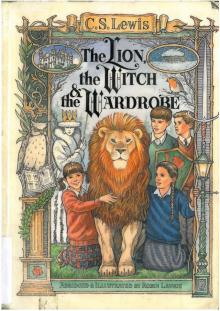 The Lion, the Witch, and the Wardrobe
The Lion, the Witch, and the Wardrobe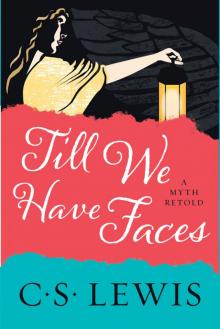 Till We Have Faces
Till We Have Faces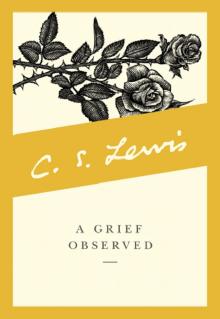 A Grief Observed
A Grief Observed The Voyage of the Dawn Treader
The Voyage of the Dawn Treader The Four Loves
The Four Loves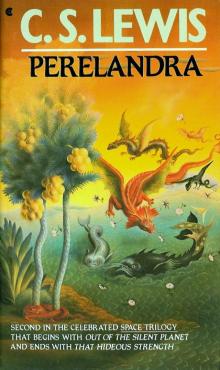 Perelandra
Perelandra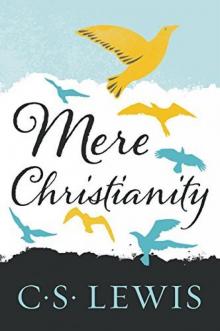 Mere Christianity
Mere Christianity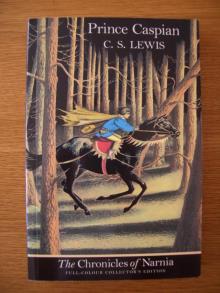 Prince Caspian
Prince Caspian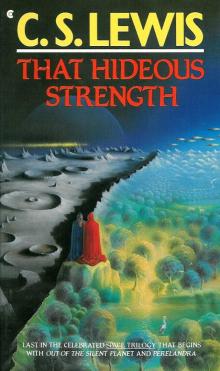 That Hideous Strength
That Hideous Strength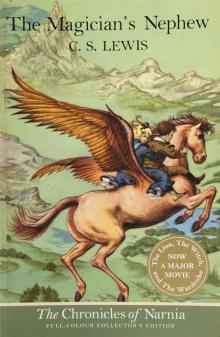 The Magicians Nephew
The Magicians Nephew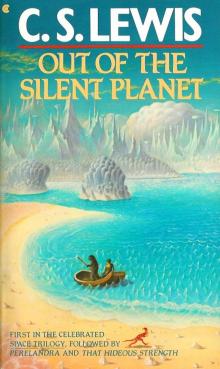 Out of the Silent Planet
Out of the Silent Planet The Screwtape Letters
The Screwtape Letters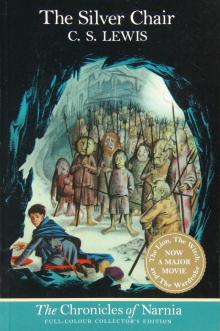 The Silver Chair
The Silver Chair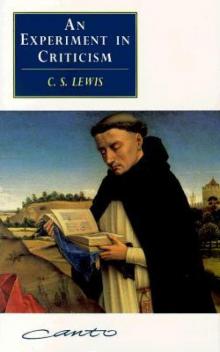 An Experiment in Criticism
An Experiment in Criticism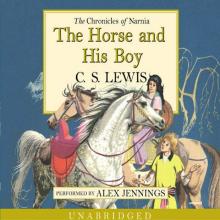 The Horse and His Boy
The Horse and His Boy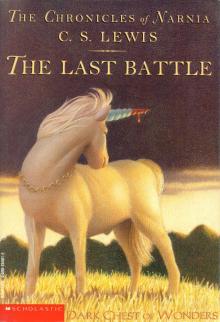 The Last Battle
The Last Battle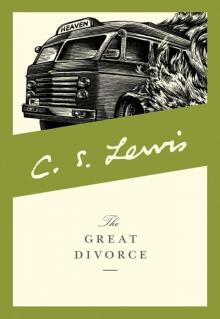 The Great Divorce
The Great Divorce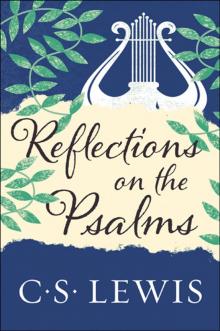 Reflections on the Psalms
Reflections on the Psalms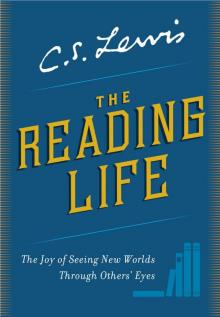 The Reading Life
The Reading Life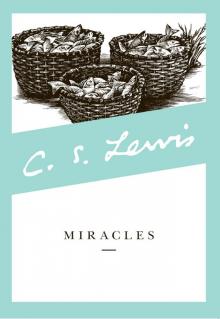 Miracles
Miracles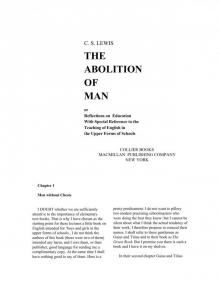 Lewis new
Lewis new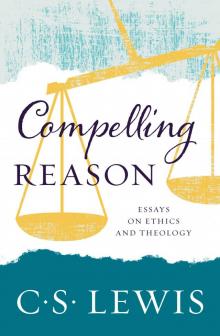 Compelling Reason
Compelling Reason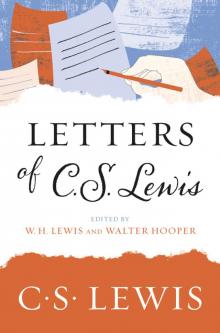 Letters of C. S. Lewis
Letters of C. S. Lewis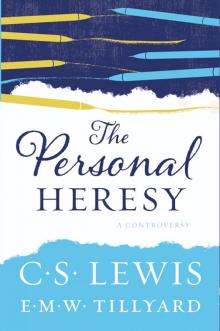 The Personal Heresy
The Personal Heresy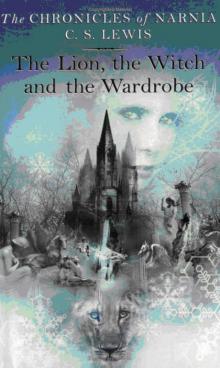 The Lion, The Witch And The Wardrobe
The Lion, The Witch And The Wardrobe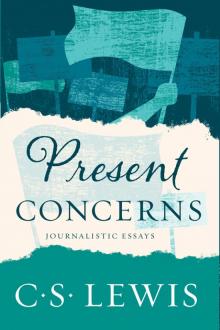 Present Concerns
Present Concerns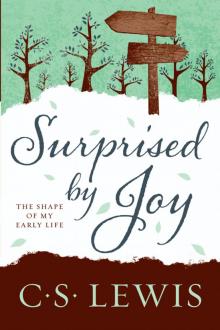 Surprised by Joy
Surprised by Joy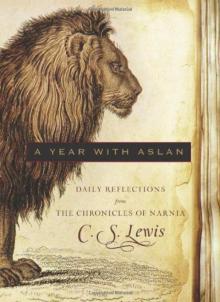 A Year with Aslan: Daily Reflections from The Chronicles of Narnia
A Year with Aslan: Daily Reflections from The Chronicles of Narnia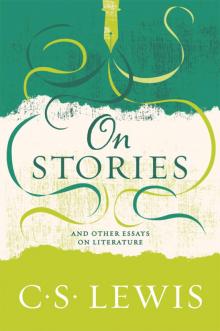 On Stories
On Stories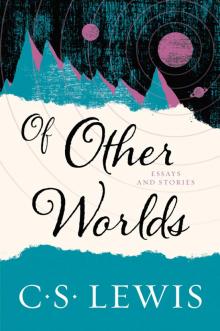 Of Other Worlds
Of Other Worlds The World's Last Night
The World's Last Night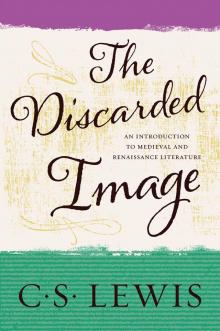 The Discarded Image
The Discarded Image The Chronicles of Narnia Complete 7-Book Collection with Bonus Book
The Chronicles of Narnia Complete 7-Book Collection with Bonus Book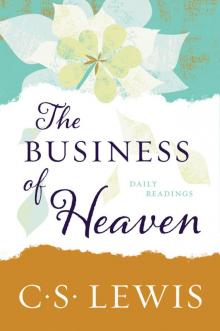 The Business of Heaven
The Business of Heaven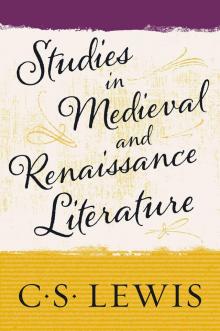 Studies in Medieval and Renaissance Literature
Studies in Medieval and Renaissance Literature The Dark Tower
The Dark Tower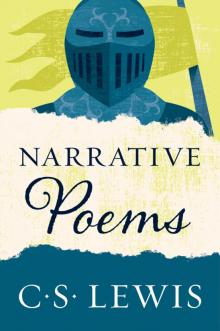 Narrative Poems
Narrative Poems All My Road Before Me
All My Road Before Me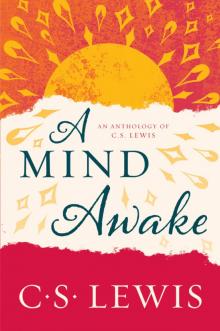 A Mind Awake
A Mind Awake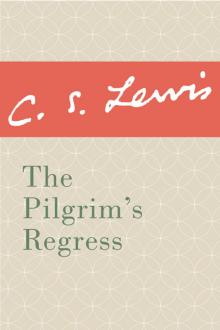 The Pilgrim's Regress
The Pilgrim's Regress